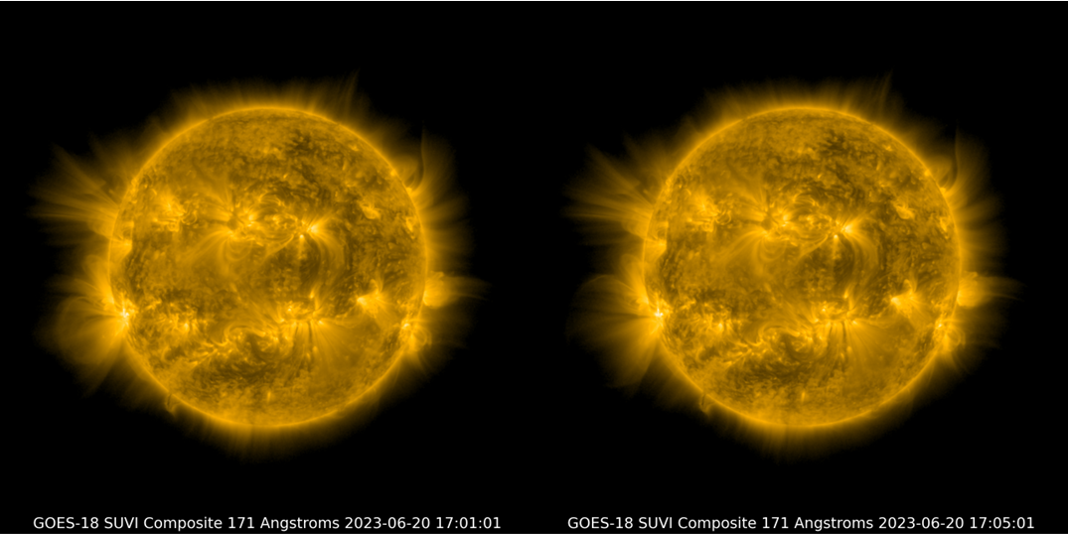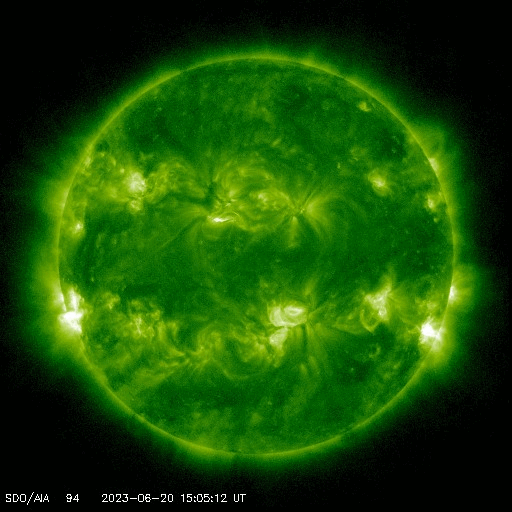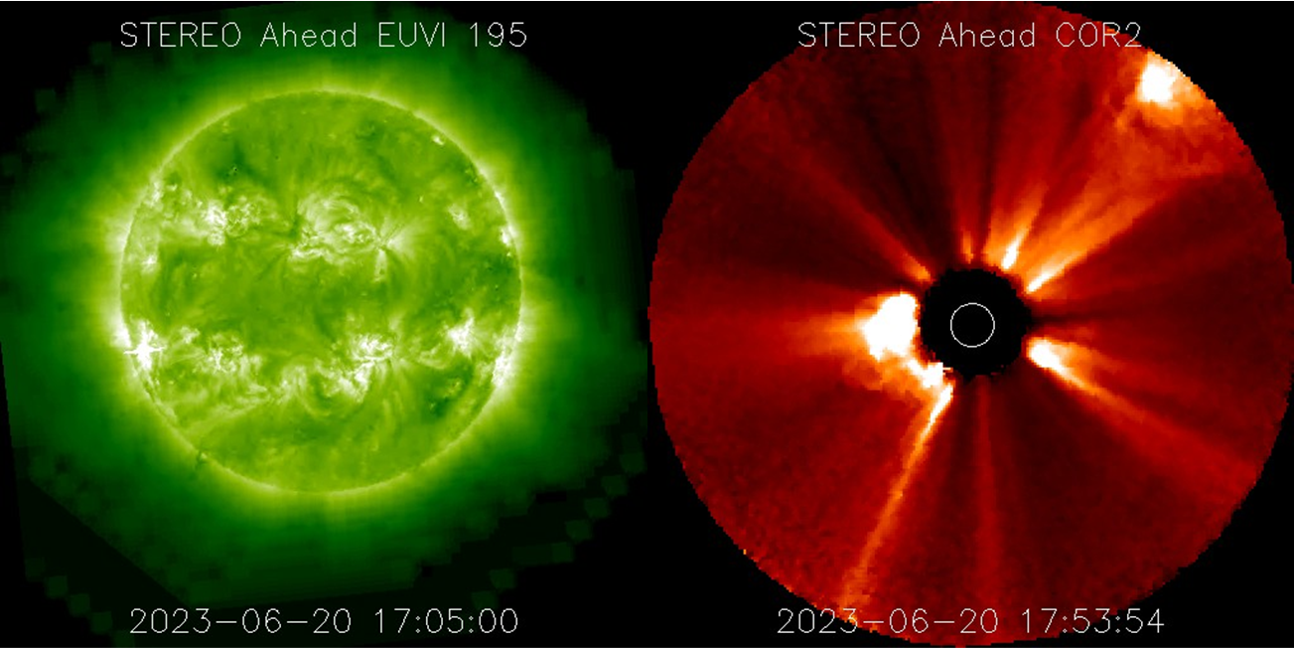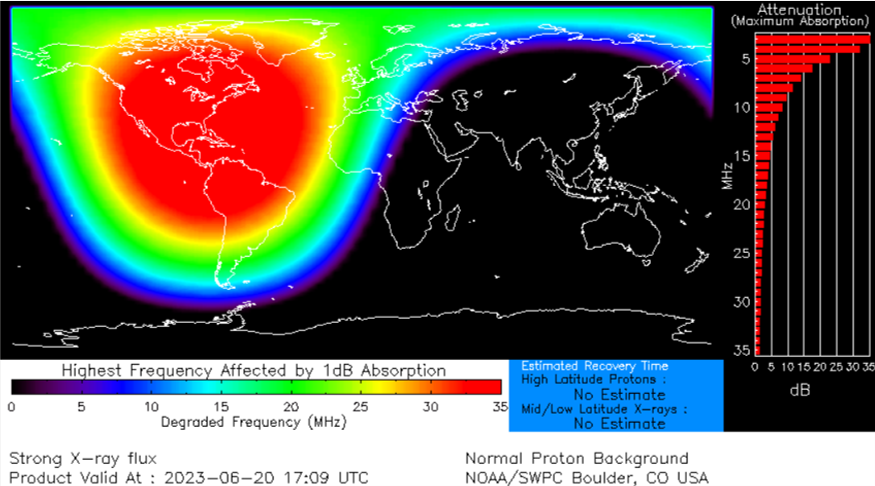The Sun produced an X1.1 flare peaking at 17:09UTC on 20 June (GOES). This was the first X-class flare since 29 March this year (STCE newsitem). The source was located to the southeast of NOAA 3341's main spot. This region had contributed to an M-class flare earlier today, but seemed magnetically all in all not very complex. It was also still close to the southeast limb, hampering an accurate analysis of its magnetic structure. At the time of this writing, GOES has not observed an enhancement in the proton flux. The GOES/SUVI 171 images (extreme ultraviolet at temperatures around 700.000 degrees) underneath show how a magnetic bubble over the flaring region bursts open.

The clip (SDO/AIA 094 ; multi-million degrees) shows the evolution in this area from around 2 hours before to 1 hour after the flaring event. The blooming and diffraction patterns in the EUV images are image artefacts, not related to the flare - See this STCE newsitem for more info). Some coronal dimming and an EIT wave can be seen using the Solar Demon tool (SIDC ; annotated image).

A Type II radio burst has been reported by the Radio Solar Telescope Network (RSTN ; NOAA/SWPC event reports). A shock speed for the associated coronal mass ejection (CME) was calculated to be in excess of 1000 km/s. STEREO-A instruments imaged the flare (underneath left) as well as the associated CME (underneath right), which does not seem to have an earth-directed component, but more coronagraphic imagery are needed to formally confirm this.

Modestly enhanced radio bursts were observed at GNSS (RSTN ; NOAA/SWPC) and other radio frequencies. The reported burst value of 480 sfu near the solar radio flux frequency of 2.8 GHz (10.7cm radio flux) confirms the event as a Tenflare and is likely to affect the noon-recording (20:00UTC) by Penticton. The map underneath (D-RAP) shows that the soft x-ray and EUV emission from this flaring event may have resulted in a radio black-out affecting HF radio communications over mainly over Canada, the United States, Latin-America, and most of South-America up to Brasil. An advisory for civil aviation has been issued (PECASUS). Further strong flaring from this active region is possible.






